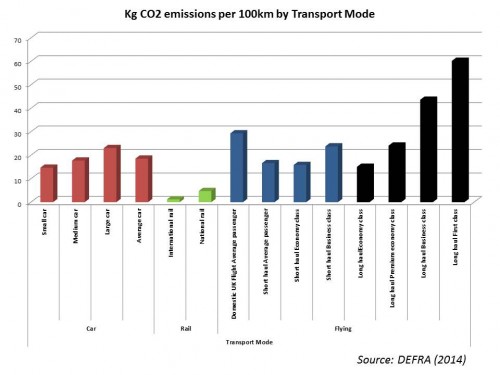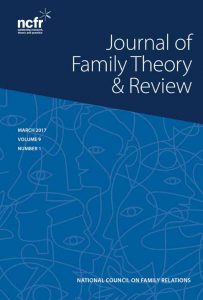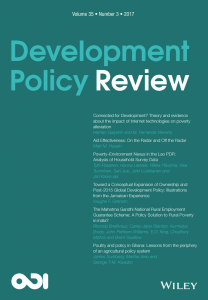Flight-path dependency: How an uneven transport market is killing off green options.

Picture courtesy of Deutsche Bahn [http://www.bavaria.by/main-stations-bavaria-germany]

Dawn on the Barcelona-Paris night train
This news not only made me sad but angry. Sad – because sleeper trains are a low-stress, relaxing and green alternative to flying, evoking a certain romance you won’t get with easyjet. Angry – because one can guess the simple reason why sleeper trains are failing: unfair competition from cheap flights. The ‘cheap’ part is probably obvious to you; the ‘unfair’ part perhaps less so.
An excellent recent article by Stefan Gossling, my favourite tourism-sociologist (everybody needs one), persuasively argues that there are several ‘transport taboos’ which policy-makers are reluctant to face up to or even admit. One of those taboos is that the most energy intensive forms of transport (basically, cars and planes) are the least taxed and the most subsidized. Consider air travel which is, according to figures from DEFRA (which I’ve put into the following graph), the most carbon-heavy form of travel per kilometre.
As you can see, flying, particularly domestic flights or first/business class, is particularly carbon-heavy per kilometre travelled. But there is no correlation between carbon emissions and government taxation. In fact the reverse is true. Firstly, there is no VAT chargeable on international flights. This exemption costs EU governments around $10 billion and, because VAT is (or would be) proportional to the ticket price, those who travel the most often, the furthest distances, or fly first/business class are the most subsidized. So the more carbon your flight creates, the more subsidy you get.
Perhaps more surprisingly, there is no tax on jet fuel, nor has there ever been since 1944 – this is the crucial exemption which allows flying to be so cheap compared to other forms of travel. In addition, the air industry receives subsidies and preferential treatment which other industries can only dream of. Ryanair alone received at least 600 million euros in government subsidies between 2008 and 2010, mainly to attract them to start new routes (much to the annoyance of rival airlines). As a result of tax breaks and subsidies, as well as significant economies of scale enabled by the rapid growth of low cost carriers, air fares have become, on average, 1.3 % cheaper every year since 1979 – a third cheaper in real terms than they were twenty years ago according to industry figures. In stark contrast, rail fares have risen, on average, by 1.2% since 1995.
I’m sure most of us can relate to this from personal experience. Booking one month ahead, a return flight from London to Edinburgh is priced at £29.98 return (with, you guessed it, Ryanair), while the cheapest train is £69.30. My comparison is not entirely scientific, but I’m sure it’s not entirely unrepresentative. Have you ever wondered why it costs more and more to fill up your car, take a train or coach, yet air tickets remain cheap? It appears that through uneven regulation and taxation, the market is rigged in aviation’s favour. This kind of inequity should offend an economic liberal as much as any tree-hugging greenie.
In terms of climate change, all this matters because air travel is widely predicted to triple or even quadruple in terms of air passenger miles by 2050 (compared to 2005), with a similar rise in carbon emissions. Technological innovation simply cannot keep up. Ed Davies, the UK Energy Secretary, said this week that “If you look at the future of flight it is possible to imagine, with technological innovation, that we have zero-carbon flight in the future”. And he’s right of course: it is possible to imagine it, just like it’s possible to dream of teleports and hoverboards. But as recent research by Matt Grote shows, along with many other studies, that low-carbon air travel remains a distant dream, and zero-carbon air travel a fantasy. One need only look at Boeing’s order book to see that jumbo jets like the 747 series, first produced in 1968, are going to be made and sold until at least 2030.

If you just imagine hard enough, you can have one for christmas.
As we can see by the closure of sleeper train routes in Europe, not only does this rigged market make high-carbon travel choices more likely (because flying is cheaper), it actually stops low-carbon travel choices from surviving at all, by making them uncompetitive and eventually unprofitable. Thus, path dependency – or flight-path dependency, if you will – becomes increasingly irresistible.
Of course, there are moves in the opposite direction. In particular, China’s government is investing heavily in high-speed rail, here the UK is following suit with HS2. Research by Fu et al shows that when high-speed rail journeys are 4 hours long or less, this is the ‘tipping point’ at which passengers will choose rail over air travel for the same journey. One encouraging example of this was in 1992, when HSR was introduced to Spain on the Madrid-Seville route, and the rail share of the total rail-and-air market increased from just 21% in 1991 to a huge 82% in 1993. But simply providing greener travel alternatives will not necessarily mean people use them. Prices have to be competitive to ween people away from flying and this is where governments have a responsibility to end aviation’s easy regulatory ride and even out the transport market.
As the People’s Climate March and the recent UN climate summit in New York reminded us, climate change requires urgency, not only at the level of states and big emitters, but also at the level of individual consumption. We need to get into green habits sooner rather than later. Governments need to facilitate such habits by leveling out the transport market and ending the crazy situation where the most polluting forms of travel are also the cheapest.
References
Fu, X., Zhang, A., & Lei, Z. (2012). Will China’s airline industry survive the entry of high-speed rail? Research in Transportation Economics, 35(1), 13–25. doi:10.1016/j.retrec.2011.11.006
Gössling, S., & Cohen, S. (2014). Why sustainable transport policies will fail: EU climate policy in the light of transport taboos. Journal of Transport Geography, 39(2014), 197–207. doi:10.1016/j.jtrangeo.2014.07.010
Grote, M., Williams, I., & Preston, J. (2014). Direct carbon dioxide emissions from civil aircraft. Atmospheric Environment, 95, 214–224. doi:10.1016/j.atmosenv.2014.06.042
*Domestic travel: between two UK airports, Short-haul: <3700km, Long-haul: >3700km. Flying emissions calculated including Radiative forcing (RF), a measure of the additional environmental impact of aviation. These include emissions of nitrous oxides and water vapour when emitted at high altitude.








Green travel is about staying at home, living close to your work & growing your own, instead of buying everything from the nearby Tesco.
Trains btw. are not just expensive but inefficient & heavily state subsidised.
Trains cause high concentrations of noxious pollutants locally while emissions from planes are well dispersed, maintaining concentrations in the atmosphere at trace levels.
CO2 in the atmosphere would not stop its steady rise if all planes were grounded from tomorrow, yet remote sensing confirmed this month that global average temperatures haven’t risen for the past 18 years despite the continuing steady rise in atmospheric CO2 throughout that period.
http://www.reportingclimatescience.com/news-stories/article/global-warming-pause-hits-18-years-on-rss-data.html
I was very pleased to find this page. I wanted to thank you for your time for this fantastic read!! I definitely liked every little bit of it and i also have you saved to fav to see new things in your blog.